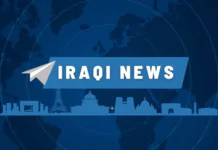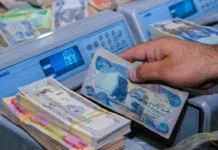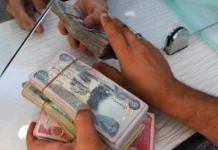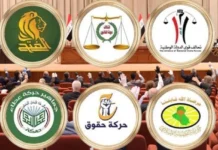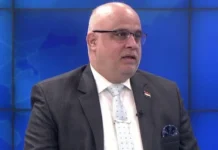Good Morning,
Finance — Quiet Liquidity, Loud Fragility
How ample liquidity and low confidence are reshaping incentives for states and markets
Overview
Global finance today is characterized by abundant liquidity but weakening confidence: markets price risk differently, and non-traditional vectors of instability (geopolitical shocks, AI trading, policy mis-steps) loom large. This dynamic is pushing states to hedge with new partners, instruments and settlement arrangements.
Key developments
- Central banks keeping policy rates higher for longer while discussing targeted easing — liquidity is available but costly for some borrowers.
- Investor flows rotate between risk assets (on diplomatic optimism) and safe havens (when policy or geopolitical risks spike).
What this means for global alliances
- Short-term: Countries with strong reserve positions and trusted capital markets — the U.S., EU members, parts of Asia — attract investment during shocks.
- Medium-term: Emerging economies seek bilateral swap lines, alternative credit facilities and non-USD settlement mechanisms to reduce exposure to policy shifts in reserve-currency countries.
- Result: We should expect a proliferation of regional finance pacts and central-bank linkages that mirror geopolitical blocs.
How this accelerates financial restructuring
- The search for resilience encourages diversification away from unilateral liquidity dependence: swap lines, local-currency bonds, and regional clearing hubs gain traction.
- Private capital reallocates to ecosystems with state support (sovereign-backed infra financing, state-anchored digital money pilots), compressing funding costs for politically aligned partners.
Practical signals to watch
- New or expanded bilateral swap agreements and central bank repo arrangements.
- Shifts in the composition of international bond issuance (local currency vs. USD).
- Private sector deals that are explicitly state-supported.
Bottom line: The finance layer is quietly fragmenting along strategic lines: liquidity remains global in appearance but resilience is being built regionally.
This is not just politics — it’s global finance restructuring before our eyes.
Seeds of Wisdom Team
Newshounds News™ Exclusive
Sources:
- Reuters — Morning Bid: Gold sold, stocks stall
- Reuters — Stocks climb to record, dollar edges down on US-China trade optimism
~~~~~~~~~
Diplomacy & Peace — Out with the Old, In with the New
How recent diplomatic shifts (ceasefires, mediation, trade talks) are rewriting strategic alignments
Overview
Recent high-profile diplomatic moves — notably the Gaza ceasefire/middle-east diplomatic momentum and renewed high-level U.S.–China engagement — are reducing some near-term risk premia and prompting states to recalibrate alliances and trade relationships. Diplomacy is becoming the primary driver of market sentiment and alliance formation.
Key developments
- A multilateral ceasefire and follow-on talks in the Middle East have eased energy/defence risk premia in markets.
- High-level diplomatic outreach between major powers (U.S.–China engagement) is prompting business confidence and signalling possible tariff/tech restraint pathways.
What this means for global alliances
- Convergence zones: Countries that broker or support peace can gain strategic influence — they become hubs for trade corridors, reconstruction capital, and security partnerships.
- Realignment pressure: States previously hedging between major powers may now lean into economic corridors that promise faster gains (trade, investment, infrastructure).
- Diplomatic currency: States increasingly use trade concessions, investment packages, debt relief and digital infrastructure deals as diplomatic tools — economic carrots replacing some traditional security pledges.
How this accelerates financial restructuring
- Peace and active diplomacy reduce certain risk premia, making long-dated infrastructure finance and cross-border investment more feasible — this encourages new clearing arrangements and cross-border payment initiatives.
- The political capital earned by mediators translates into preferential access to reconstruction contracts and financial arrangements — creating new nodes in the global financial architecture.
Practical signals to watch
- Agreements to settle some trade or strategic transactions in local currencies rather than USD.
- New regional reconstruction funds and public-private vehicles tied to diplomatic wins.
- Which states host follow-on diplomatic conferences — hosting equals influence.
Bottom line: Successful diplomacy doesn’t just reduce violence — it unlocks structural economic rewiring that benefits the architects of peace.
This is not just politics — it’s global finance restructuring before our eyes.
Seeds of Wisdom Team
Newshounds News™ Exclusive
Sources:
- Reuters — Mediators step up diplomacy after Gaza truce shaken
- Brookings — What Could the Israel–Gaza Deal Mean for the Middle East?
- Council on Foreign Relations — A Guide to Trump’s Twenty-Point Gaza Peace Deal
- European Business Magazine — Markets Breathe as Gaza Peace Deal Recasts the Geopolitical Map
~~~~~~~~~
Seeds of Wisdom Team RV Currency Facts Youtube and Rumble
Newshound’s News Telegram Room Link
Follow the Gold/Silver Rate COMEX
Follow Fast Facts
Seeds of Wisdom Team™ Website
